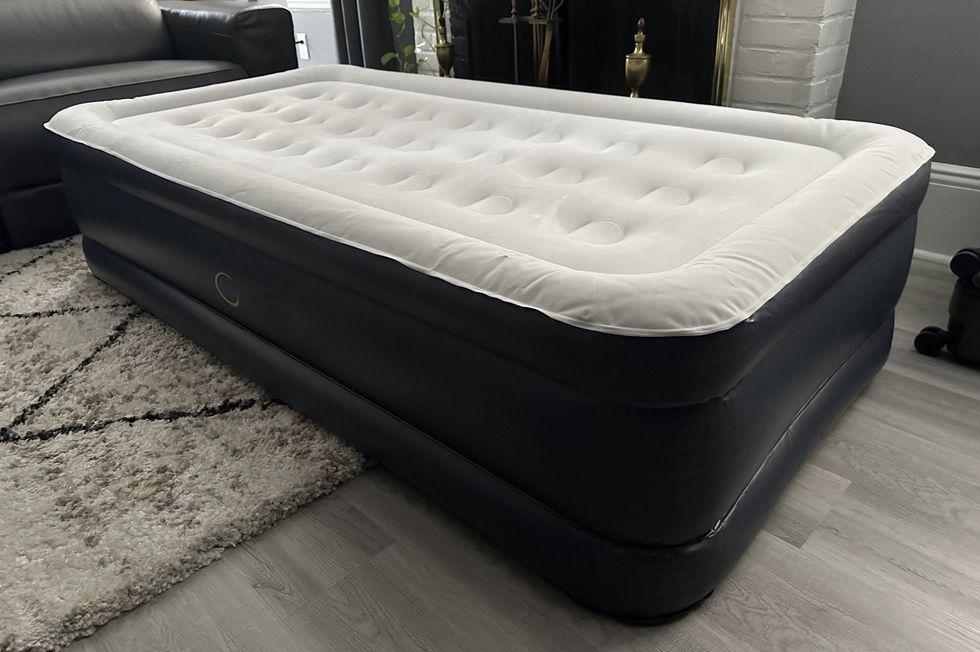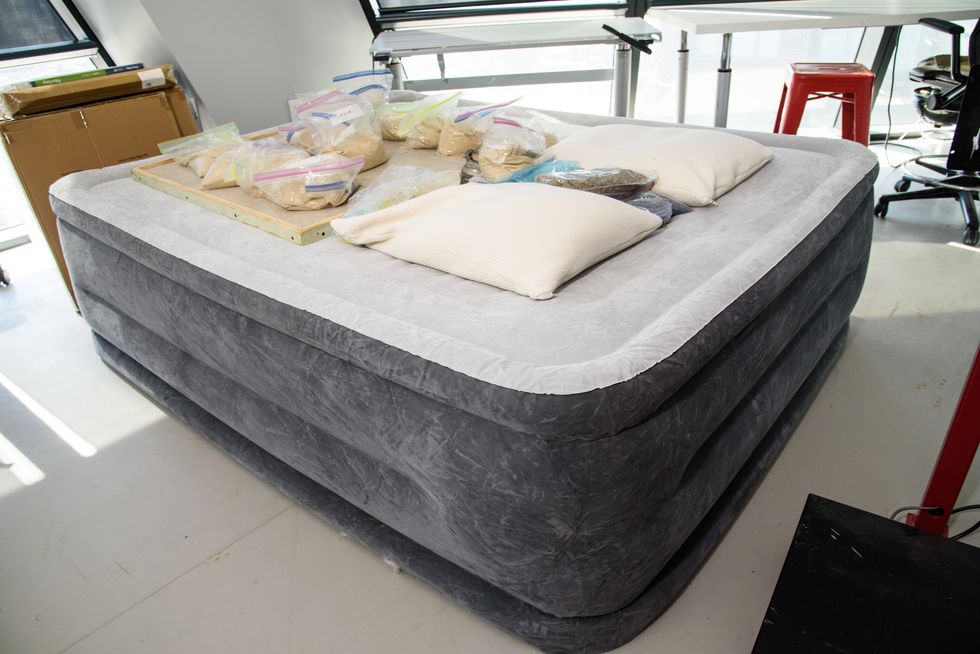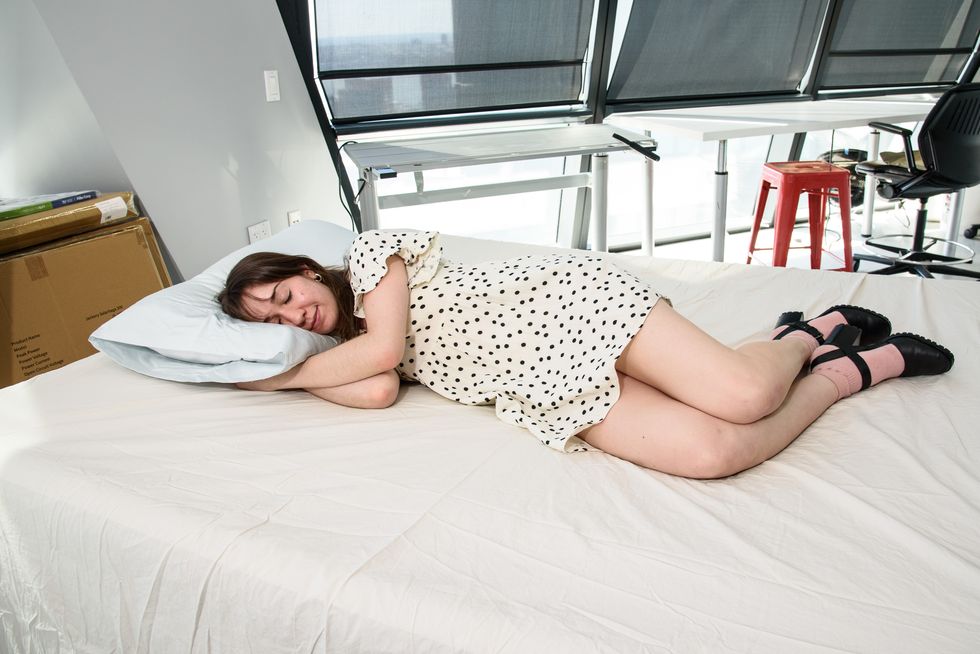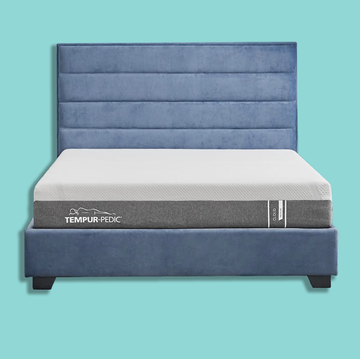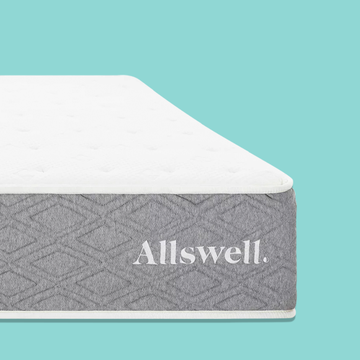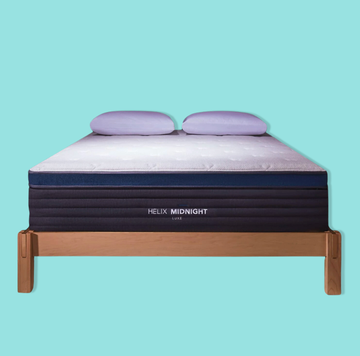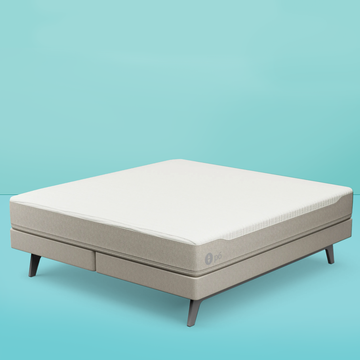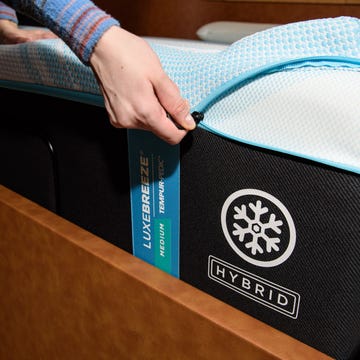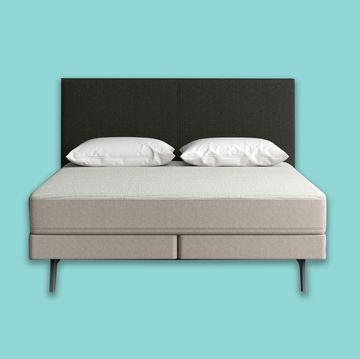4 Best Air Mattresses That Are Surprisingly Comfortable
These inflatable beds can stand up to everyday use, camping trips and more.

We've been independently researching and testing products for over 120 years. If you buy through our links, we may earn a commission. Learn more about our review process.
It's worth investing in a good air mattress. Quality sleep is essential, even if it's "only for a few days." Beyond feeling comfortable, a good air mattress needs to last, without leaking air overnight. And it should be easy to set up and store when not in use. That's why we've researched countless options and tested 13 different models to find ones you can count on for your overnight guests.
At the Good Housekeeping Institute Textiles Lab, we've tested hundreds of products for more than a century, including the best mattresses and best pillows. To find the best air mattresses, we evaluated everything from overnight leakage and indentation over time to puncture resistance and bursting strength. We then polled staffers on their initial impressions of how easy each was to set up and how comfortable it felt. Plus, we asked consumer testers to set up the mattresses and sleep on them at home to rate their ease of use and comfort. The picks ahead are the top performers in our tests, along with newer models that have unique features and rave reviews from users.
Looking for an air mattress for car camping instead? Check out our guide to the best car air mattresses.
More air mattresses to consider
Our picks above are the best of the best, but here are other great performers from our evaluations to keep in mind.
Coleman Double-High SupportRest Air Bed: Perfect for camping, this air mattress from Coleman inflated in less than 2 minutes in our tests and didn't lose any air overnight. The catch is you'll need to purchase a pump separately (though Coleman offers several options, from a battery-operated pump to a rechargeable pump). The pump is very loud, especially if you're inflating the bed at night.
The Shrunks Travel Bed: This kid-friendly pick comes in toddler and twin sizes with safety features like bumpers around the entire perimeter. If your child still manages to roll off in their sleep, it's only a few inches off the ground. A slot around the edge of the mattress lets you easily tuck in your own sheets. Our Senior Parenting & Relationships Editor, Marisa LaScala, swears by it for her daughter when traveling.
READ OUR FULL REVIEW: My Daughter Wouldn't Sleep Away From Home Until We Got This Toddler Travel Bed
How we test air mattresses
The Good Housekeeping Institute Textiles Lab evaluates all sorts of mattresses and begins the process by researching offerings from top brands, analyzing materials and specifications, evaluating specific features and taking note of any brand claims. This past year, we put seven new air mattress contenders through a series of rigorous Lab tests and consumer tests to find the best of the best, using standardized testing methods and other industry standards.
Here are some of the factors we consider when testing air mattresses:
✔️ Inflation and deflation time: In the Lab, we time how long it takes each air mattress to fully inflate and deflate. We also asked our at-home testers how they felt about the process and whether the bed inflated and deflated in a reasonable amount of time.
✔️ Ease of use (set-up and packing): Our experts and consumer testers note how easy it is to unpack and set up the air mattress and how easy it is to pack up after deflating.
✔️ Overnight leakage: We first weigh the air mattress after initial inflation before placing 170 pounds of sand on the bed for 24 hours to mimic the weight of a person sleeping on it. The sand is then removed and the bed is re-weighed to assess overnight leakage.
✔️ Sagging and indentation: A 10-pound weight is placed on the mattress after inflation and the depth of the indentation is recorded. After the overnight leakage test, this test is repeated to note any signs of sagging.
✔️ Bursting strength and puncture resistance: Using specialized machinery including our Instron Tensile Strength tester and Bursting Strength tester, we test the bursting strength and puncture resistance of the air mattress material.
✔️ Comfort: In addition to having consumer testers try the air mattresses overnight at home, we have testers lie on the beds in our Lab to gauge initial comfort for a variety of sleepers, including those with different preferred sleep positions and body types.
✔️ Consumer testing: After sleeping on the air mattresses for longer periods of time, our testers provide feedback through surveys. They rate features from how easy the instructions were to follow and how noisy the pumps were to how supportive the beds felt and whether they woke up feeling sore. Testers also share their thoughts on any issues they had, how the air bed compares to other ones they've tried, as well as any likes and dislikes.
What to look for when shopping for the best air mattress
Finding the perfect air mattress can feel complicated — especially when many online options look the same. Here are a few key features to keep in mind as you shop for your next air bed to help simplify the process:
- Pump: Options include manual, battery-operated and plug-in. Most air mattresses come with a pump (either attached or separate), but sometimes you'll need to purchase one separately.
- Inflation time: The mattress should be able to inflate and deflate in just a few minutes. This is typically listed as a specification from the manufacturer.
- Air chambers: The most supportive air mattresses have vertical air chambers or coils that help distribute weight. Air beams that run side to side can still feel comfortable, but you may notice some sagging when you lie down. You can spot the difference by looking at the surface: Ones with the less supportive air beams look like rows, while coils look like columns.
- Flocked fabric: This material feels slightly fuzzy and can be found on the top side of air mattresses (so it doesn't feel like you're sleeping on plastic) and the bottom (to prevent slipping on hardwood floors). Some air beds will also have it on the sides, which can help a fitted bed sheet stay in place.
How tall should an air mattress be?
Taller air mattresses (often dubbed "double-height") tend to receive higher comfort ratings in our tests. Taller air beds around 18 inches tall will feel more "bed-like" and are easier to get on and off of, especially for those with mobility issues or bad knees.
Still, taller beds are more of a hassle to fold down and store and take longer to set up when compared to a lower-profile or "single-height" bed (typically under 12 inches). It all comes down to personal preference and whether you're using it at home or on the go. Some air mattresses we've tested, like Coleman's 4-N-1, can stack to serve as a taller Twin or lay out as a low-profile King. Over the years, we've seen taller air mattresses become the norm, especially those with built-in pumps.
Why trust Good Housekeeping?
Lexie Sachs is the Executive Director of Strategy & Operations at the Good Housekeeping Institute. She has more than 15 years of experience in the textiles industry, including merchandising and product development for home products, and holds a B.S. in fiber science from Cornell University. Lexie joined GH in 2013 and has extensively tested all types of bedding. Air mattresses are some of the first products Lexie tested in the Textiles Lab, and she swears by them for overnight guests or sleepovers at her home. She currently owns several of our top-tested picks.
Grace Wu most recently updated this article. She's a textiles product review analyst at the Good Housekeeping Institute and oversaw recent air mattress testing. Grace has written several stories about different mattresses, from latex mattresses to mattresses for adjustable beds, and is guilty of pulling out her Twin-size Serta air mattress for a quick afternoon nap, even though her bedroom is just a few steps away. Prior to joining GH, Grace earned a Master of Engineering in materials science and engineering and a B.S. in fiber science from Cornell University.
Lexie Sachs (she/her) is the executive director of strategy and operations at the Good Housekeeping Institute and a lead reviewer of products in the bedding, travel, lifestyle, home furnishings and apparel spaces. She has over 15 years of experience in the consumer products industry and a degree in fiber science from Cornell University. Lexie serves as an expert source both within Good Housekeeping and other media outlets, regularly appearing on national broadcast TV segments. Prior to joining GH in 2013, Lexie worked in merchandising and product development in the fashion and home industries.
Grace Wu (she/her) is a product reviews analyst at the Good Housekeeping Institute's Textiles, Paper and Apparel Lab, where she evaluates fabric-based products using specialized equipment and consumer tester data. Prior to starting at Good Housekeeping in 2022, she earned a master of engineering in materials science and engineering and a bachelor of science in fiber science from Cornell University. While earning her degrees, Grace worked in research laboratories for smart textiles and nanotechnology and held internships at Open Style Lab and Rent the Runway.
Watch Next

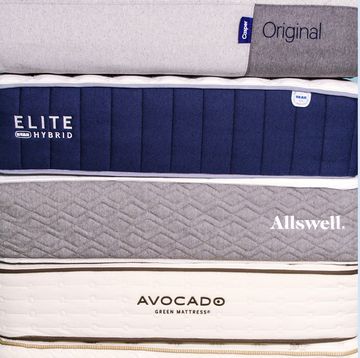
The Best Mattresses
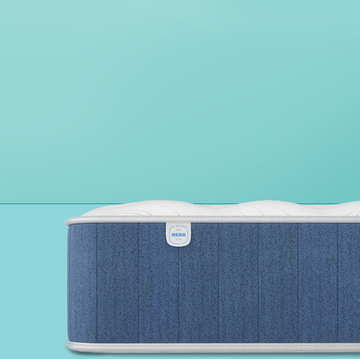
The Best Mattresses You Can Buy Online
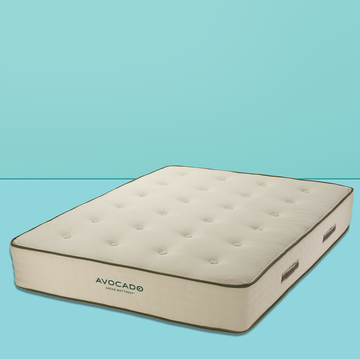
The Best Organic Mattresses

The Best Mattresses in a Box



